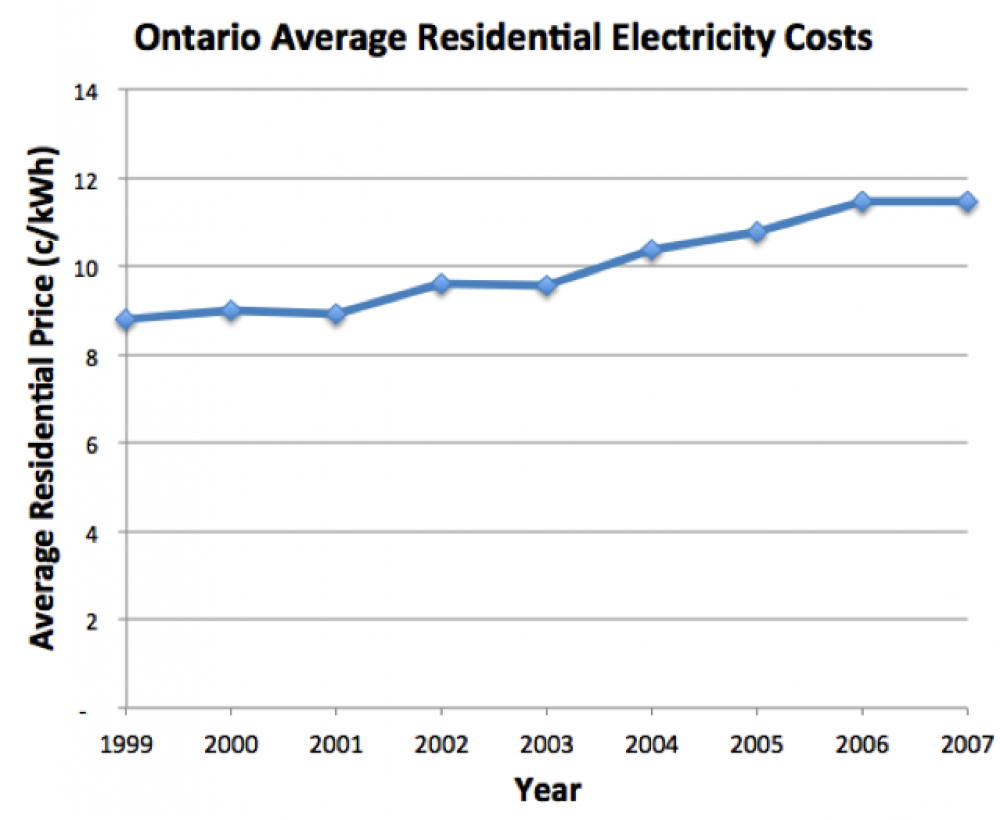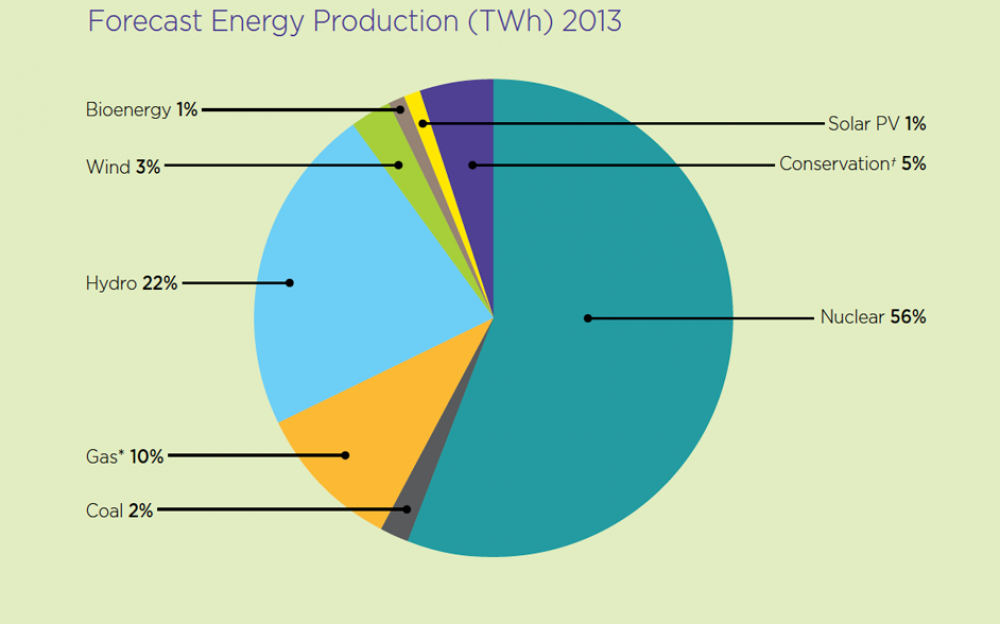Ontario’s electricity system is often maligned, and more often misunderstood. Providing a multi-billion dollar essential service that employs thousands of people in competing industries is a tall order — doubly so when you’re trying to keep pollution levels and prices down. As we head into a new year, it’s important to take a step back and acknowledge some important gains the province has made so far.
Earlier this month, Ontario updated its long-term energy plan. The plan tries to address questions surrounding the province's nuclear fleet, renewable energy development and the role of natural gas — all while ramping up energy efficiency efforts. Given all of these competing interests in a market with declining demand, in many ways it offers a reasonable approach. That’s no small feat for such a highly charged file.
Coal-fired electricity is a thing of the past in Ontario. While this change has been discussed before, the scale of this accomplishment bears repeating. In 2002, close to half of all the coal burned in Canada was burned in Ontario, and the province had a coal fleet comparable to Alberta’s existing one. Those days are over.
Much of the media coverage of the long-term energy plan focused on its projections of rising costs. Electricity prices are indeed forecast to rise in coming years, as they have in the past (see the figure below).

Source: Statistics Canada, Electric Power Generation, Transmission and Distribution. Data discontinued in 2007.
Given the state of Ontario’s infrastructure, it’s no surprise that electricity prices have gone up. Replacing or rebuilding aging infrastructure with new generation invariably costs more money. The long-term energy plan’s focus on conservation is the best approach to making electricity bills more manageable while keeping our air clean.
Contextualizing electricity costs
Critics point to renewable energy as the culprit for price increases. In fact, renewables have had very little impact on rates to date.
As more renewables are built, they will have a greater impact on rates. However, these critics neglect to mention something important: any new electricity source — renewable or otherwise — is more expensive than legacy assets. Even if we removed renewables from the mix, another new source of generation would be needed. Our aging infrastructure needs to be replaced somehow, and that comes with a price.
The alternatives to renewables in Ontario are either natural gas or nuclear generation. While natural gas prices are currently at historic lows, over-reliance on gas put us at the mercy of price volatility for decades to come. Natural gas is also far from clean: it still emits half as much carbon as the coal plants that were phased out due to environmental concerns.
As for nuclear, new reactors are much more expensive than a renewable portfolio. The government’s decision to scrap new nuclear reactors reflects this reality, and adds clarity to the future supply mix.
Significant growth of clean energy in the coming decade
Compared with the alternatives, clean energy is competitive. The important gains that have been made in Ontario also shouldn’t be taken for granted.
Over the next 12 years, the energy plan anticipates power from wind, solar and bioenergy to grow from five per cent to 17 per cent of total generation. Hydro will also grow. Taken together, nearly half of Ontario’s power is projected to come from renewables by 2025. That’s up from 28 per cent today.


Source: Ontario Ministry of Energy, Ontario's Long-Term Energy Plan.
In addition to replacing coal power, renewable energy — rather than gas power — will pick up the slack left by retiring nuclear reactors. This is contrary to what some renewable opponents have claimed. As nuclear’s share of the electricity mix falls from 59 per cent in 2013 to 42 per cent by 2025, very little of it will be replaced by fossil fuels. Gas-fired generation in 2025 will remain at similar levels to today.
Lasting benefits
All of this is good news for the air we breathe, as well as for the climate. As the figures below show, the incredible drop in air pollution and greenhouse gases from Ontario’s coal phase-out is projected to hold over the long term, even with the retirement of nuclear reactors. Ontarians will be breathing easier for generations to come.

Source: Ontario Ministry of Energy, Ontario's Long-Term Energy Plan.
Despite some bumps in the road, Ontario has much to be proud of in these numbers. And there is still work to do. Questions remain about the cost effectiveness of refurbishing existing nuclear reactors, as well as how to reduce emissions beyond the electricity sector.

Source: Ontario Ministry of Energy, Ontario's Long-Term Energy Plan.
Ontario has made important commitments to reduce greenhouse gases. Keeping these commitments will require further action, especially from big polluters across industry. Having slayed the high-emissions giant of coal power, now it’s time to move ahead with broader climate initiatives. These include joining Quebec and California’s carbon market in order to fulfill the province’s commitments made as part of the Western Climate Initiative.
Defying its critics, Ontario is a working model of what can be accomplished by focusing on solutions. The province has positioned itself as a leader in the clean technology marketplace — a growing sector that will be worth $3 trillion globally by 2020. There have been challenges, and there will be more, but that’s inherent in taking leadership positions. Heading into the new year, the province should focus on consolidating the gains it has made.
As Warren Buffett once said, “Someone's sitting in the shade today because someone planted a tree a long time ago.” When making long-term energy investments, that’s good advice to keep in mind.










